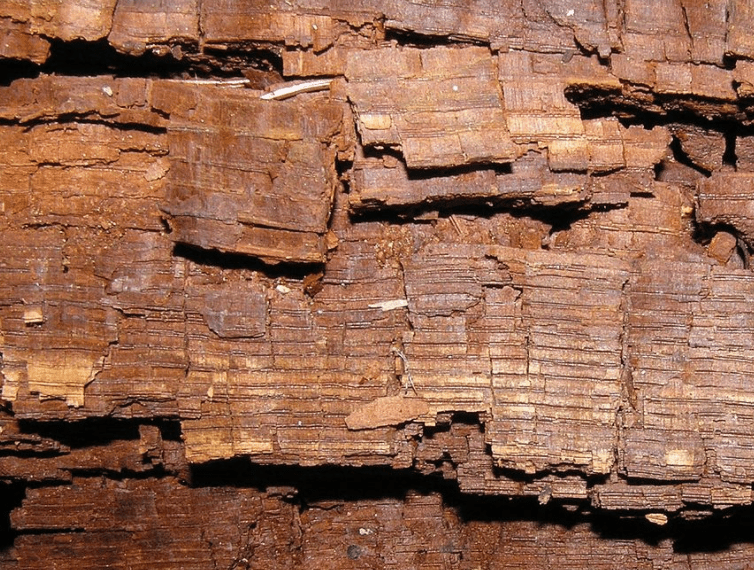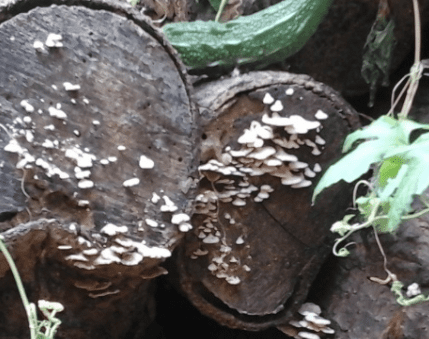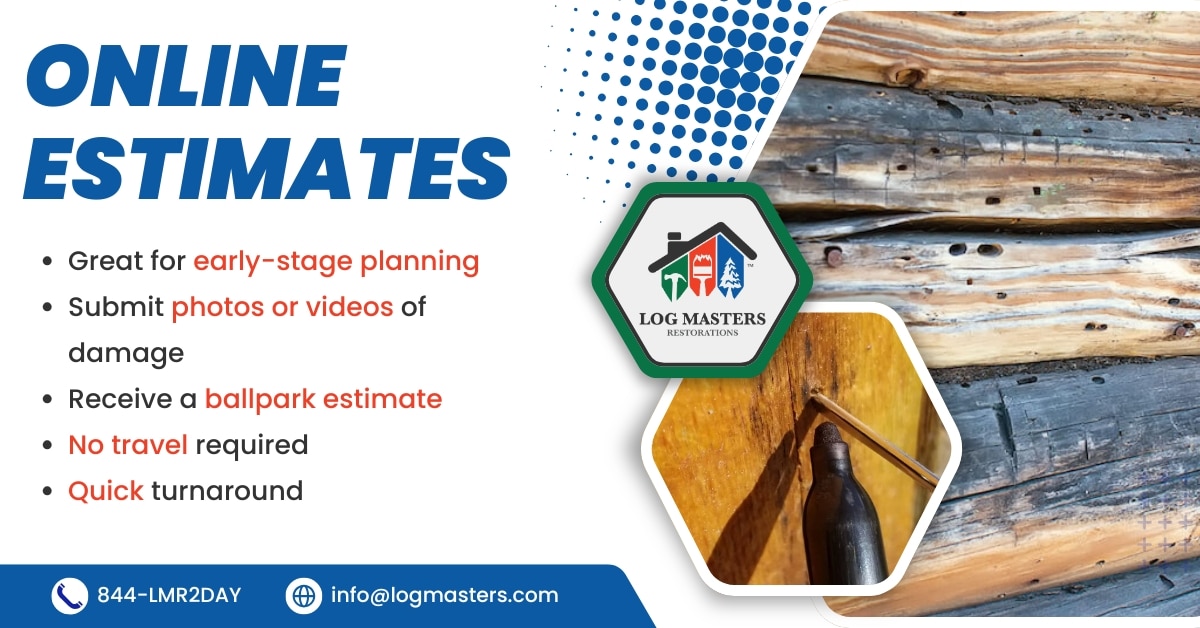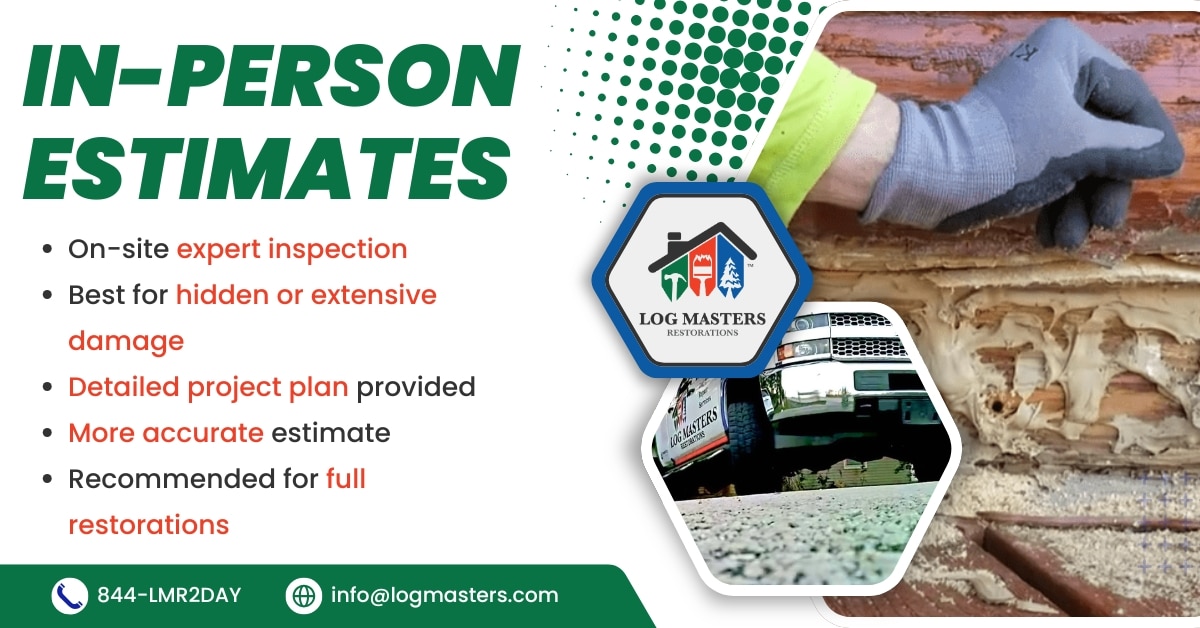Winter may bring beauty, but it also brings challenges for log cabins. Freezing temperatures, snow, ice, and moisture can take a toll on your home if you don’t prepare. Without proper care, problems such as rot, drafts, and pest infestations can occur and cause costly damage.
That’s why we’ve created this cabin winter maintenance checklist. It combines simple tasks you can do yourself with professional services that may still be available in colder weather. By following this guide, you’ll learn how to maintain your cabin during winter, protect your investment, and keep your home cozy until spring.
Cabin Winter Maintenance Checklist
1. Inspect for Log Rot
Log rot doesn’t take a season off. Even in freezing conditions, moisture can find its way into compromised logs, making them cold to the touch, damp with perspiration, or even frosty on the surface. Left unchecked, rotted logs act like a highway for cold air, driving up your heating bills and spreading structural damage.
How to check:
- Look for soft spots or spongy wood.
- Check for frost buildup or “icy hairs” on logs.
- Pay close attention to shaded or moisture-heavy areas.
Professional help: Winter is still an ideal time for log repair and replacement. Our team can remove and replace rotted sections, helping you save on heating costs and prevent further damage.
2. Seal Gaps and Drafts
As logs expand and contract with the seasons, gaps can appear between them or around windows and doors. These openings may not look big, but they’re major energy drains in winter.
DIY fixes:
- Use weather stripping around windows and doors.
- Install temporary draft stoppers at thresholds.
Professional fixes:
- LMR can install backer rod and grip strip in winter as a first line of defense. While full caulking or chinking requires warmer conditions, this step significantly reduces drafts and helps maintain cabin comfort.
3. Clean Gutters and Rooflines
Snow and ice dams are a real threat for log homes. If gutters are clogged, melting snow has nowhere to go, and water may back up into your roof or walls.
Checklist for gutters:
- Remove leaves and debris in late fall.
- Check downspouts to make sure water flows freely.
- Consider installing gutter guards to minimize buildup.
This simple step prevents costly water damage and ensures your cabin is ready for heavy snow.
4. Check Stain and Finish Protection
A solid stain is your cabin’s armor against moisture and UV rays. If your stain is peeling, faded, or cracking, it may not be doing its job.
Winter limitations:
- Staining and sealing require steady temps above 40°F.
- Cold weather prevents proper curing and adhesion.
Winter strategy:
- Schedule stain removal now so you’re ready for spring.
- Plan ahead to book staining services early—before the busy warm season begins.
5. Pest Prevention in Winter
While some insects slow down in the cold, others seek the warmth of your home. Termites, carpenter ants, and rodents are still threats during winter.
Steps to take:
- Inspect joints, corners, and logs for small entry points.
- Store firewood away from your cabin to avoid attracting pests.
- Use caulking and grip strip to close gaps until permanent sealing can be completed.
Keeping pests out in winter protects both your comfort and your logs.
6. Perform Basic Maintenance Tasks
Even when it’s cold, small maintenance jobs make a big difference:
- Light washing – On mild days (above freezing), wash exterior logs with a low-pH soap to remove dirt and mildew.
- Interior checks – Look for moisture around windows, vents, and joinery.
- Ventilation – Make sure your attic and crawl spaces are properly ventilated to prevent condensation buildup.
These small steps help you maintain a cabin during winter and keep it healthier year-round.
Preparing for Winter With Professional Help
Not all services can be performed in cold weather, but Log Masters Restorations can still help prepare your cabin for winter. Depending on the conditions, we can provide:
- Log repair and replacement
- Old stain removal with media blasting or sanding (when temps are workable)
- Backer rod and grip strip installation
- Some maintenance services
For tasks like staining, caulking, or chinking that require warmer conditions, winter is the perfect time to schedule an inspection and reserve your spot for spring work.
Why Winter Repairs Matter
Many homeowners delay log home repairs until spring, but waiting can cost you:
- Higher energy bills – Drafts and rotted logs let cold air in.
- Worsening rot – Moisture trapped in logs spreads damage during freeze-thaw cycles.
- Spring backlog – Contractors book up quickly in warmer months, leaving you waiting even longer.
By taking care of repairs now, you’ll have a more winter-ready cabin and peace of mind knowing your home is protected through the harshest season.
Cabin Winter Maintenance Checklist (Quick Reference)
For easy reference, here’s your short checklist to prepare and maintain your log home in winter:
- Inspect for log rot and repair as needed
- Seal gaps and reduce drafts
- Clean gutters and downspouts
- Check stain and plan ahead for spring
- Inspect for pests and close entry points
- Perform light washing and basic upkeep
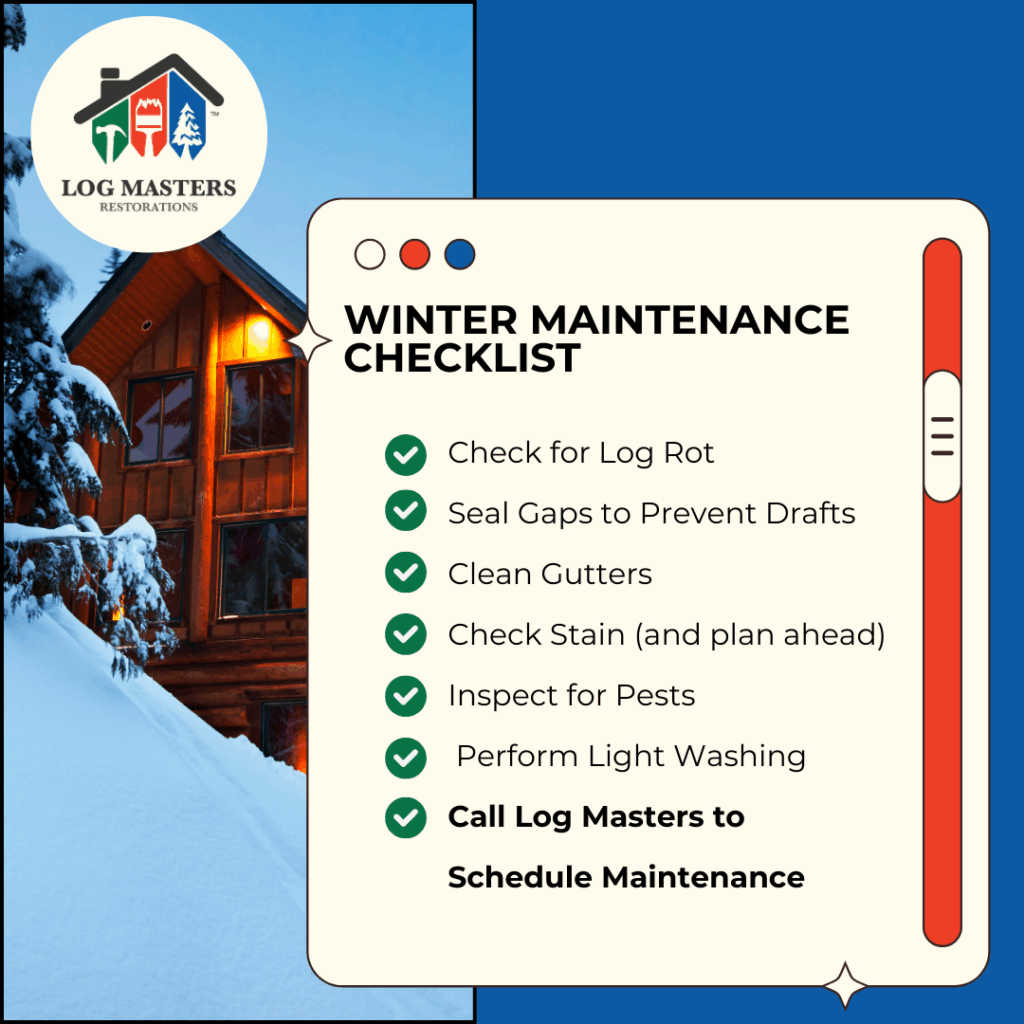
Trust Log Masters Restorations for a Winter-Ready Cabin
A log home is built to withstand the elements—but only if it’s maintained properly. By following this cabin winter maintenance checklist, you’ll protect your investment, lower your energy costs, and enjoy the season without worry.
At Log Masters Restorations, we provide expert guidance and hands-on help to keep your cabin in top shape year-round. Whether it’s repairing rotted logs, sealing drafts, or planning a spring staining project, our team is here to help.
Contact us today for a winter inspection or maintenance plan and let us keep your cabin winter-ready.
The post Cabin Winter Maintenance Checklist: Keep Your Log Home Winter-Ready appeared first on Log Home Restoration, Maintenance & Additions | Log Masters.
source https://logmastersrestorations.com/blog/winter-blasting/
